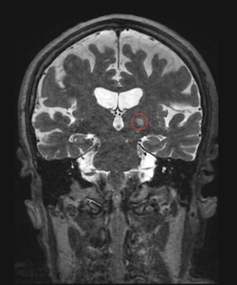
Sound waves at frequencies above the threshold for human hearing, known as ultrasound, have long been a staple in medical diagnostics. However, recent advancements suggest that this technology could soon revolutionize the treatment of diseases ranging from cancer to neurodegenerative disorders like Alzheimer’s. These developments are being closely watched by the medical community as potential game-changers in patient care.
As a biomedical engineer specializing in focused ultrasound, I have witnessed firsthand the significant growth of this technology in clinical settings. Focused ultrasound involves concentrating sound energy into a specific volume, and researchers are continually discovering innovative ways to harness its potential for therapeutic purposes.
The Evolution of Focused Ultrasound
Ultrasound technology operates by using a probe that converts electrical currents into vibrations. These vibrations, or ultrasound waves, travel through the body and reflect off various tissues, allowing for the creation of detailed images. The concept of focused ultrasound dates back over 80 years when scientists discovered that concentrating ultrasonic waves could heat and destroy brain tissue, similar to how a magnifying glass focuses sunlight to ignite a leaf.
Despite these early discoveries, technical challenges initially hindered the clinical application of focused ultrasound. The skull’s absorption of ultrasound energy, for example, made it difficult to target damaged brain tissue effectively. However, advancements in imaging technology and acoustic physics have since overcome these obstacles, paving the way for numerous clinical trials aimed at treating conditions such as essential tremor, which is now routinely treated with focused ultrasound worldwide.
Innovative Applications in Medicine
Enhancing Drug Delivery to the Brain
The blood-brain barrier is a protective shield that prevents harmful substances from reaching the brain. While essential for protection, this barrier poses a significant challenge for delivering therapeutic agents to treat brain diseases. Focused ultrasound has emerged as a promising solution by temporarily opening the blood-brain barrier through the oscillation of microbubbles in blood vessels. This technique allows drugs to penetrate the brain precisely where needed.
Clinical trials are currently underway to test the efficacy of focused ultrasound in delivering drugs for conditions like glioblastoma and Alzheimer’s. Furthermore, animal studies suggest that this method could also facilitate the delivery of gene therapies, potentially revolutionizing treatment for numerous brain disorders.
Stimulating Immune Responses Against Cancer
Cancer immunotherapy harnesses the body’s immune system to combat cancer, yet many tumors remain unresponsive to traditional treatments. Focused ultrasound offers a novel approach by converting tumors into debris that the immune system can recognize and attack. This discovery has led to the establishment of the world’s first focused ultrasound immuno-oncology center at the University of Virginia, which is exploring the combination of focused ultrasound and immunotherapy for advanced melanoma treatment.
Treating Rare Diseases
While focused ultrasound research has primarily targeted prevalent diseases, its potential for treating rare conditions is equally promising. Cerebral cavernous malformation (CCM), a rare brain disorder, is one area of interest. Current treatments like surgery and radiation carry significant risks, but focused ultrasound could offer a safer alternative. By opening the blood-brain barrier, focused ultrasound enhances drug delivery to CCMs and may even halt their growth, as observed in preclinical studies.
Looking Ahead: The Future of Focused Ultrasound
The ongoing research and clinical trials underscore the transformative potential of focused ultrasound in modern medicine. As scientists continue to refine this technology, the hope is that it will become a standard treatment option for a wide array of diseases, offering new hope to patients worldwide.
With further advancements and a deeper understanding of its mechanisms, focused ultrasound could redefine therapeutic approaches, making previously untreatable conditions manageable. The medical community eagerly anticipates the results of ongoing studies, which could usher in a new era of precision medicine.
Note: This article is based on material provided by The Conversation and has been edited for clarity and style. Mirage.News does not take institutional positions or sides, and all views expressed are solely those of the author(s).







